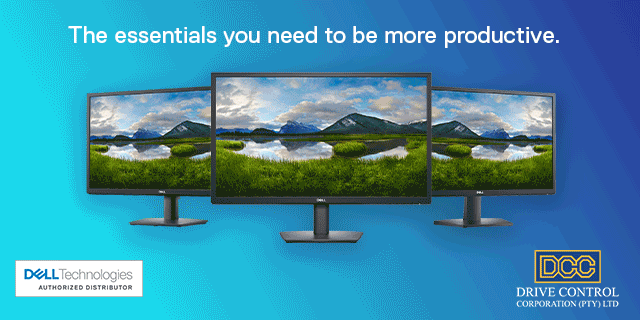Optimising a building’s energy consumption through data analysis
By Industry Contributor 15 July 2022 | Categories: news
NEWS SPONSORED BY DELL E-SERIES 24" MONITORS FROM DCC:
By Frikkie Malan, head of sustainability at Remote Metering Solutions
According to various sources, up to 30% of the total energy consumption of a building can be attributed to heating, ventilation, and cooling. One of the most effective ways of optimising these involves having access to the right data. Analysing this data will provide the necessary guidance to where the most relevant interventions can be implemented to significantly reduce energy costs.
Ideally, planning the energy efficiency of a building should be done during the design phase as it can be challenging to retrofit existing structures. Of course, this does not mean it is impossible to do so, or that an energy efficient retrofit project cannot deliver attractive returns on investment. Since there are more existing buildings than new ones, the effective planning and implementation of building energy efficiency programmes should be a priority if local building owners are to get ahead of rising electricity prices and to mitigate against the ongoing threat of load shedding, failing electricity infrastructure, and limited water resources.
At RMS we have access to all the critical data to assist with informed decision-making whether at the design phase or during the planning of retrofitting projects. Access to this data, better equips a property owner or building manager to design a sustainable programme that would benefit tenants and property owners alike.
Traditional methods such as installing insulation or better quality glass may not make a significant difference to the energy consumption of a building. Therefore, some out of the box thinking is required.
RMS has extensive experience in unlocking energy efficiency through comprehensive data analysis. We look at an entire portfolio and determine the areas where maximum efficiencies can be gained. This allows us to identify the buildings that would give owners the best return on investment, those where demand and peak tariffs need to be managed more effectively, and the ones where other opportunities for innovation might become available.
There could be several passive and active design considerations to evaluate depending on the guidance provided by the right data. An example of passive design considerations relating to the sun is the orientation of rooms. For example, south facing rooms are cooler, while east and west facing rooms can get extremely hot in summer. It therefore makes sense for building owners and residents to use their north facing rooms as well-used spaces.
Active considerations can range from replacing electric heaters with gas heaters, installing ceiling fans to increase air flow, replacing electric geysers with solar water heaters, and using energy efficient lighting.
The Empire State Building is a well-known example of how retrofitting can reap significant benefits, and is now considered to be one of the world’s most energy efficient buildings. The building’s energy consumption was reduced by more than 40% through a major infrastructure overhaul to optimise energy use; from retrofitting windows, to elevators, which recapture energy that would be lost as heat and radiators which use reflective barriers to reduce heat loss into the air.
Whichever solutions are selected, their success is supported by having real-time visibility of the energy consumption of a building. Internet of Things devices can provide incredible insights into energy consumption both at a building level and at a tenant or equipment level. These devices can be implemented at a fraction of the cost of upgrading existing infrastructure.
So, instead of viewing the process of improving the energy efficiency of a building as a complex undertaking, building owners and tenants can start small and focus on the quick wins. The key to achieving this is to change our way of thinking and leveraging the available data to unlock opportunities for efficiency and sustainability.
Most Read Articles

Have Your Say
What new tech or developments are you most anticipating this year?




